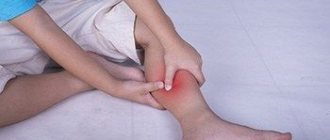Erythrophobia – a condition in which a person is afraid that his face will turn red or become covered with red spots in public. Found in 0.2% of the population. Often seriously complicates communication with others and business partners. It is especially significant for patients whose profession involves publicity or active communication with people.
Specialists at the Leto clinic provide qualified treatment for erythrophobia using medicinal and non-medicinal techniques. You can make an appointment by phone 8(969)060-93-93.
Causes
The face is actively supplied with blood. A huge number of small vessels pass through the subcutaneous tissue and muscles. The muscles are located superficially and are fixed at one end directly to the skin. Because of these features, even a small rush of blood is enough to change complexion.
From time to time, noticeable redness of the face occurs in all people. Provoking factors are high or low ambient temperature, significant physical activity, strong emotions (excitement, embarrassment, shame). In patients with erythrophobia, the face turns red even with minor experiences or at rest.
The reason for the vivid physiological reaction is the individual characteristics of autonomic regulation - increased activity of the sympathetic nervous system. Repeated, untimely or inappropriate episodes of facial flushing provoke anxiety and anticipation.
Emotions cause increased production of adrenaline, which stimulates the sympathetic nervous system. The patient blushes. Negative emotions are “fixed” and repeated, which causes an increase in episodes of hyperemia and generalization, that is, the spread of a pathological reaction to an increasing number of life situations.
Symptoms
It is worth recalling once again that with anxiety-phobic disorder, symptoms appear when getting into a situation or encountering an object of fear, and even when thinking about them.
The most common manifestation is a panic attack . Anxiety quickly rolls over a person, he is gripped by the fear of death, feels a physical catastrophe, is afraid of going crazy, and completely loses control over himself. The pressure rises, the heart beats quickly, there is not enough air, unbearable compression and pain arise in the chest. You sweat profusely, your muscles become weak, you feel dizzy, your gait becomes unsteady, you lose your balance, your stomach gets upset, you want to go to the toilet. All this lasts a few minutes.
Other symptoms are similar to manifestations of Da Costa syndrome (another name is cardiophobia) , which is characterized by attacks similar to severe heart and vascular diseases. The individual experiences what is called animal fear, accompanied by intense vegetative manifestations. The heart rhythm becomes erratic, blood pressure jumps, breathing is disrupted, and there is severe pain in the chest.
Neurotic disorder also exhibits symptoms of generalized anxiety disorder . The patient experiences an incomprehensible anxiety that is not associated with any circumstances. He is constantly tense, unable to relax, and afraid of something. It is difficult for him to fall asleep, and if he does, the sleep is restless, with nightmares and frequent awakenings, during which the anxiety becomes simply unbearable.
Irrational fear and the accompanying reactions of the autonomic system lead to the fact that a person begins to avoid places where he may have an attack. Even if accompanied by someone, he cannot afford to go there. In order to prevent ending up in such a place, the individual develops a special strategy: he makes a detour route, does not use public transport, does not use the elevator, leads a reclusive life if he is afraid of the crowd, or, conversely, strives to be in it if he is afraid of loneliness.
The patient consciously shrinks his social circle, does not want to be in society, and is unable to set goals and achieve them. He cannot concentrate due to unpleasant internal disturbing sensations, cannot think logically and clearly, his memory fails him.
As a result: problems at work, personal life suffers, its quality, career, etc. And the further it goes, the worse it gets. That is why anxiety-phobic disorders must be treated immediately by contacting specialists. In Moscow they can be found at the City Psychoendocrinological Center (MGPEC).
Don't waste time and go to the doctor if:
- the above symptoms are severe and uncontrollable;
- anxiety does not go away for a long time, even if the stressful situation is far behind;
- fear finds without reason;
- fear and anxiety are accompanied by negative somatic symptoms;
- Anxiety and physical manifestations have a negative impact on personal and social life.
Symptoms
The main manifestation of erythrophobia is considered to be facial hyperemia or the appearance of spots on the face. In some cases, redness spreads to the neck and décolleté. Some patients feel hot during an attack. External changes cause significant mental suffering and negatively affect self-esteem and social adaptation.
Not knowing how to get rid of erythrophobia, patients avoid crowded places and choose specialties that do not involve communication with other people. Choosing a partner for them is associated with enormous difficulties, since first personal meetings are always accompanied by excitement, which causes severe facial hyperemia.
Any contacts can present difficulties : traveling on public transport, talking with a salesperson in a store, meeting friends in a cafe or on the street.
Restrictions in all areas of life cause the development of secondary mental disorders: depression, social phobia. Patients with erythrophobia may experience suicidal thoughts and intentions due to a feeling of hopelessness and hopelessness.
How to Deal with a Skin Disease Phobia
Today, skin diseases are far from uncommon. As mentioned above, rosacea is a common condition. Its main symptom is facial skin hyperemia and rashes.
Stages of rosacea development
In such cases, it is necessary to work according to a special scheme:
- Try to avoid stress. If this turns out to be impossible, try to carry out vitamin therapy as soon as possible and rest.
- Avoid being in direct sunlight for long periods of time.
- Eat right, avoid too spicy foods.
- Women can use decorative makeup to disguise skin imperfections.
- Cosmetic procedures (laser or diamond resurfacing) significantly improve the condition of the skin and mask the capillary network on the face.
- Maintain drinking regime. The most important thing for the normal functioning of any organism is the drinking regime. Drink more water. For a person of average weight, the norm of water consumption is 1.5-2 liters per day. Avoid sweet drinks with dyes; they do not saturate the body with moisture, but can cause skin rashes. To keep your dermis looking good, use a moisturizer with a mattifying effect.
- An excellent method is hardening. Water treatments help solve many problems. Pouring cold water quickly brings the skin to the desired tone and improves complexion. Make a decoction of chamomile and freeze it. Every evening before going to bed, refresh your neck and face with an ice cube, and within 2 weeks you will notice the results. The face acquires a healthy shade, and when stressed it stops turning red.
Diagnostics
The diagnosis is determined by a psychologist or psychotherapist and is based on information obtained during a survey and external examination. During the diagnostic process, it is important to distinguish erythrophobia from other conditions accompanied by similar symptoms: hot flashes during menopause, carcinoid syndrome, manifestation of rosacea, the body’s reaction to certain medications.
To exclude other causes of hyperemia, patients' faces are examined by an endocrinologist, dermatologist, oncologist and gynecologist. The scope of laboratory and instrumental diagnostic procedures is determined taking into account the identified violations.
Possible consequences
Blushing syndrome causes discomfort. Among its symptoms is an increase in obsessive anxiety, as a result of which other thoughts are dulled, and a desire arises to run away and hide from everyone. Possible consequences of the syndrome may be:
- self-doubt, feelings of inferiority;
- abstaining from public speaking, defending one’s own opinion, even if it is correct;
- lack of career advancement, refusal of new responsibilities, which leads to professional unfulfillment;
- refusal of contact with society, self-isolation;
- alcohol abuse;
- depression, thoughts of suicide.
Fear progresses if you don't get rid of it. A person cannot fully realize himself, which leads to the accumulation of negativity and the development of long-term depression. You cannot ignore a phobia, hoping that it will go away on its own. The first step on the path to recovery is recognizing the problem.
Cost of services
| CONSULTATIONS OF SPECIALISTS | |
| Initial consultation with a psychiatrist (60 min.) | 6,000 rub. |
| Repeated consultation | 5,000 rub. |
| Consultation with a psychiatrist-narcologist (60 min.) | 5,000 rub. |
| Consultation with a psychologist | 3,500 rub. |
| Consultation with Gromova E.V. (50 minutes) | 12,000 rub. |
| PSYCHOTHERAPY | |
| Psychotherapy (session) | 7,000 rub. |
| Psychotherapy (5 sessions) | 30,000 rub. |
| Psychotherapy (10 sessions) | 60,000 rub. |
| Group psychotherapy (3-7 people) | 3,500 rub. |
| Psychotherapy session with E.V. Gromova (50 minutes) | 12,000 rub. |
| TREATMENT IN A HOSPITAL | |
| Ward for 4 persons | 10,000 rub./day |
| Ward for 3 persons | 13,000 rub./day |
| Ward 1 bed VIP | 23,000 rub./day |
| Individual post | 5,000 rub. |
| PETE | 15,000 rub./day |
This list does not contain all prices for services provided by our clinic. The full price list can be found on the “Prices” , or by calling: 8(969)060-93-93. Initial consultation is FREE!
What is erythrophobia
Erythrophobia - what is it? Erythrophobia is the fear of blushing in public, during a conversation, or public speaking. The more a person fears this, the greater the anxiety and the higher the likelihood that this will actually happen. Redness is a somatic manifestation of the release of adrenaline (a manifestation of psychosomatics).
Alternative names for the phenomenon of redness: blushing syndrome, idiopathic erythema. Most often, fear is formed in those people who are prone to redness of the skin. Therefore, unlike other phobias, erythrophobia cannot be called an irrational fear.
Cholerics, people with fair skin and blue eyes are at risk for redness. And also people with hypertension, gastrointestinal diseases and people who prefer to eat spicy and hot foods, drink a lot of coffee and alcohol.
Erythrophobia occurs among celebrities, for example, Renee Zellweger suffers from it. The celebrity was able to overcome the phobia, learned to live in peace with her peculiarity, and use it to her advantage. The star made this feature part of her image. Consultations with a psychologist helped her with this.
This is interesting! Erythrophobia affects 0.2% of the world's population. But scientists suggest that the real figure is much higher. Not all people seek help, and therefore their cases are not taken into account in statistics.
Principles of treatment
Pharmaceuticals, folk remedies, surgery and psychotherapy help overcome the disease. The first three methods get rid of external signs, and therapy will get rid of the underlying causes.
To achieve the maximum therapeutic effect, a visit to a specialist is combined with medications and folk remedies. Surgical interventions are performed only in exceptional cases.
Psychotherapy will not get rid of the external signs of a phobia, but it will help you better control yourself and react less sharply to conflicts. Treatment uses cognitive behavioral therapy. It makes it possible to change the course of thoughts and get rid of the most destructive ones. Relaxing techniques - breathing and muscle relaxation - will be added. Auto-training increases self-confidence. You can practice them on your own.
Medicines help fight anxiety and block reflex vasodilation that leads to redness. The use of drugs is strictly limited, because their long-term use leads to addiction and the development of serious side effects. The course begins only after consultation with a doctor. Self-medication can lead to the development of symptoms of dystonia.
Folk remedies
Such methods help relieve nervous tension and redness. At home, you can take herbal decoctions and apply compresses. To help solve the problem:
- Pouring . They are worth starting every day with. The water temperature is slowly reduced. In the evenings, a contrast shower will be an excellent solution.
- Compresses . They will require brewed green tea (without additives). It should be cooled to room temperature, applied to cotton pads and applied to the face area at least twice a day. Green tea can be replaced with lightly salted water or chamomile tincture.
- Mint decoction . One tablespoon of crushed leaves is poured into a glass of boiling water and kept in a water bath for 10-15 minutes. Drink ½ glass before meals.
Motherwort tincture, warm water with mint and lemon will help relieve tension and suppress fear for a person in a public place.
Features of surgical interventions
Sympathectomy, an operation that suppresses the activity of the spinal nodules of the sympathetic nerve, can finally eliminate the problem. It is prescribed if other methods are ineffective. It is not recommended to do it if certain parts of the face are red. The intervention takes place under general anesthesia. Nerve activity is limited using titanium staples.
This method of treatment also has side effects. We are talking about compensatory sweating, lowering blood pressure and a negative reaction to stress. The probability of relapse after surgery does not exceed 10%.
A person suffering from erythrophobia should definitely consult a psychologist. He will help the patient understand the causes of the pathology, teach him to accept his body with all its features and at the same time live harmoniously without experiencing discomfort.
1










